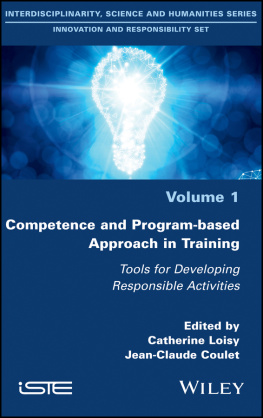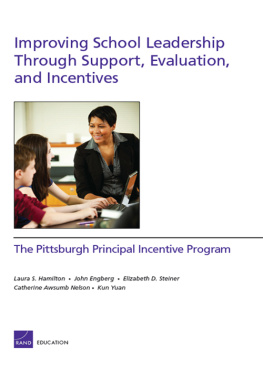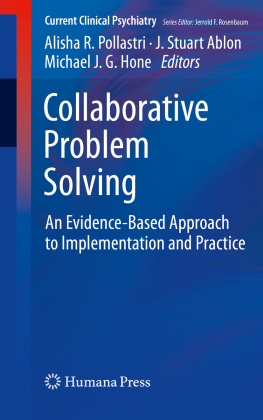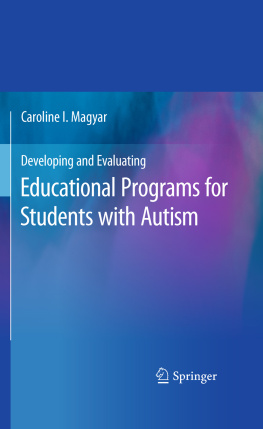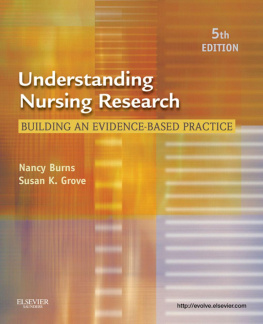Program Development in the st Century
To Gerri, Mom, Papa, and Paulmy family.
And to Denise Davenport, who would have been an incredible program developer.
Program Development in the st Century
AN EVIDENCE-BASED APPROACH TO DESIGN, IMPLEMENTATION, AND EVALUATION
Nancy G. Calley
University of Detroit Mercy
Copyright 2011 by SAGE Publications, Inc.
All rights reserved. No part of this book may be reproduced or utilized in any form or by any means, electronic or mechanical, including photocopying, recording, or by any information storage and retrieval system, without permission in writing from the publisher.
For information:
| SAGE Publications, Inc.
2455 Teller Road
Thousand Oaks, California 91320
E-mail: order@sagepub.com | SAGE Publications India Pvt. Ltd.
B 1/I 1 Mohan Cooperative Industrial Area
Mathura Road, New Delhi 110 044
India |
SAGE Publications Ltd.
1 Olivers Yard
55 City Road
London EC1Y 1SP
United Kingdom | SAGE Publications Asia-Pacific Pte. Ltd.
33 Pekin Street #0201
Far East Square
Singapore 048763 |
Printed in the United States of America
Library of Congress Cataloging-in-Publication Data
Calley, Nancy G.
Program development in the 21st century: an evidence-based approach to design, implementation, and evaluation/Nancy G. Calley.
p. cm.
Includes bibliographical references and index.
ISBN 978-1-4129-7449-3 (pbk.)
1. Mental health planning. 2. Mental health services. 3. Community mental health services. I. Title.
RA790.5.C3155 2011
362.2068dc22
2010029518
This book is printed on acid-free paper.
10 11 12 13 14 10 9 8 7 6 5 4 3 2 1
Acquisitions Editor: Permissions Editor: Production Editor: Copy Editor: Typesetter: Proofreader: Indexer: Cover Designer: Marketing Manager: | Kassie Graves Adele Hutchison Jane Haenel Megan Speer C&M Digitals (P) Ltd. Sarah J. Duffy Maria Sosnowski Bryan Fishman Stephanie Adams |
About the Author
Nancy G. Calley, PhD, LPC, is associate professor and chair of the Department of Counseling and Addiction Studies at the University of Detroit Mercy. She is also the clinical director of Spectrum Human Services Inc. and Affiliated Companies. She has worked in the mental health and human services field for more than decades, primarily in the areas of juvenile justice, child welfare, mental health, substance abuse treatment, and traumatic brain injury. She has developed several clinically based programs and has published numerous articles on program development and treatment modalities for specialized client populations, including juvenile sex offenders. As the focus of her clinical work has been on court-involved individuals and other marginalized populations, she is specifically invested in advocacy and social justice efforts to ensure access and equity in treatment for these specialized groups. She has received funding from several federal agencies and foundations to support her work and continues to be highly active in comprehensive program development efforts today.
Acknowledgments
F irst and foremost, I would like to acknowledge the individuals whom I have had the privilege of serving during my career as a mental health professionaleach and every one of them has taught me so much. Second, I would like to acknowledge all the colleagues whom I have worked with in the human services field over the past decadesthis is indeed the best and most important work to be done, and I could not be more proud to be a part of such an esteemed group. I would also like to acknowledge my graduate students of the University of Detroit Mercy Counseling programyour spirit, thirst for knowledge, and determination bring me endless inspiration. I also must extend my deepest appreciation to my academic colleagues, who have provided me with incredible support throughout this process, most especially Lisa Hawley, Libby Blume, and John Staudemaier. I would like to thank my colleagues across the country who served as reviewers of the manuscript draftyour keen eyes and ears and erudite input contributed immensely to this text. Finally, I must express gratitude to my editor at Sage, Kassie Graves, whose strong belief in this project from the very beginning helped make it possible, to both Kassie and Veronica Novak for their expert editing and support, to Meg Speer for her diligent copy editing, to Jane Haenel for her thoughtful graphics and other production-related work, and to the rest of the team at Sage that participated in bringing this book out.
Publishers Acknowledgments
SAGE gratefully acknowledges the following peer reviewers for their editorial insight and guidance:
David T. Beach, University of Kentucky
John R. Belcher, University of Maryland
Kevin W. Borders, Spalding University
Beulah Hirschlein, Oklahoma State University
Amy Galin Shulin, Kennesaw State University
Rosalie Smiley, California University of Pennsylvania
Karen VanderVen, University of Pittsburgh
Cirecie West-Olatunji, University of Florida
CHAPTER
Comprehensive Program Development in the Mental Health Professions
Learning Objectives
- Define comprehensive program development
- Increase understanding of the current climate in human services and mental health programming
- Increase understanding of the role of todays mental health professional and how it has changed over the past 20 years
- Identify the steps involved in comprehensive program development
COMPREHENSIVE PROGRAM DEVELOPMENT: YESTERDAY VERSUS TODAY
*Fortunately, and largely because of the incredible group of women with whom I worked and our need to provide the best treatment to our clients, we struggled, learned, and grew quickly.
Comprehensive Program Development
Todays Mental Health Professionals and Program Development
Although not that long ago1993times have changed dramatically in clinical program development. This is particularly evident in the expectations and emphasis placed on clinical program design and the use of evaluation methodsdriven by rigorous and well-supported clinical design, accountability, and outcomes evaluation. In fact, I would never be allowed today to get away with what I did in 1993, specifically because today the stakes have been raised considerably (and necessarily), and as they have been raised, funding sources have continued to play an increasingly active role in ensuring that sufficient rigor and accountability exists. This is illustrated clearly in the requirements of my most recent program development project (i.e., 2010).


